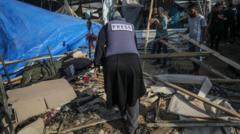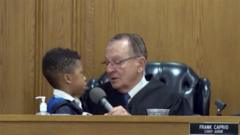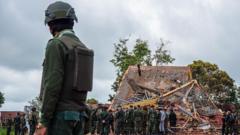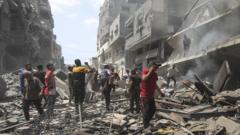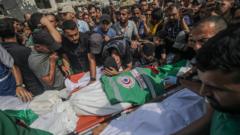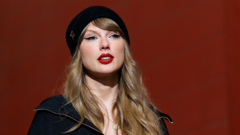In a disturbing development, an AI-generated smear campaign against journalist Julia Mengolini, fueled by Argentina's President Javier Milei's mocking social media posts, exemplifies the growing hostility towards the press. Experts warn of the implications for journalistic integrity and public safety.
Argentina's Press Under Fire: AI Smear Tactics Highlight Milei's Hostility

Argentina's Press Under Fire: AI Smear Tactics Highlight Milei's Hostility
President Javier Milei's aggressive online campaign against journalists raises serious concerns for press freedom in Argentina, especially targeting those who criticize his administration.
In recent weeks, the political climate in Argentina has turned hostile towards journalists, particularly under President Javier Milei’s administration. A notable incident involved an AI-generated smear video that falsely accused journalist Julia Mengolini of incest, a move that highlights Milei’s aggressive stance against critical media figures.
The president, known for his active presence on social media platforms like X, has directed a torrent of at least 65 posts targeting Mengolini, who is a well-known radio host and has not shied away from holding Milei’s government accountable. In the frenzy of online mockery, Milei’s supporters have taken to ridiculing Mengolini over the fabricated video, signifying a dangerous shift in the treatment of journalists in Argentina.
Experts are voicing alarm as Milei's relentless use of derogatory language—frequently aimed at women—combined with his endorsement of disinformation tactics, threatens to dismantle press freedom in the country. The president's slogan, “We don’t hate journalists enough,” borrows heavily from the anti-media rhetoric seen in other nations and indicates a troubling embrace of aggression against the press.
While Milei has not directly shared the AI video, his messages have made it clear that he supports the campaign against Mengolini, framing it as a warranted retaliation for her criticisms. This incident not only underscores the risks faced by journalists but also reflects a broader trend of increasing hostility and misinformation being weaponized against the media, placing them in jeopardy and potentially inciting real-world violence.


